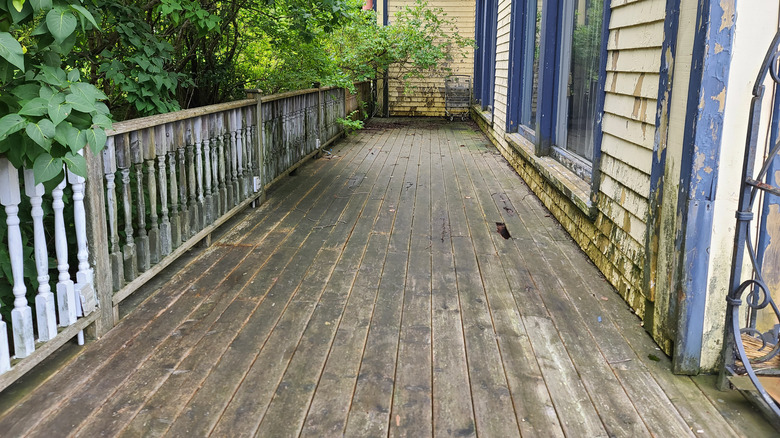How To Know If Your Wood Deck Is Beyond Repair
Wooden decks are wonderful additions to a home, offering a space to socialize with friends, relax outdoors, and grill the perfect dinner. Decks can be preserved through routine care and maintenance, such as cleaning, sanding, and sealing the wood. But even with the best upkeep, your deck won't last forever. Years of temperature changes will cause the wood to expand and contract and the countless winter snowstorms and summer rainfalls will eventually wear it down, causing the wood to warp, crack, and eventually rot.
Thankfully, even if your deck is a decade old or more, it doesn't necessarily mean that it can't be repaired. Different areas of our decks will experience differing exposure to outdoor elements and higher foot traffic than others, meaning that while some areas need attention other parts may be salvageable. But there are clear signs and factors to consider when deciding whether or not your wooden deck is beyond repair.
Examine the construction material
While it is important to consider the age of your deck, deciding whether or not the deck is too old to repair will often depend on the material used and the care it was given throughout the years. Wooden decks are typically made with three kinds of common woods: pressure-treated wood, cedar deck, and red decking. Pressure treatment is a popular choice that helps prevent rot and insect damage risks to the planks. Cedar decking is an affordable option with a natural resistance against wood decay that can last up to 20 years. Redwood decking is similar to cedar but can last up to 30 years if the wood is sealed and cared for routinely.
Ipe decking is another option and is the most durable, however, it tends to be an expensive wood and is not used nearly as often as others. Nonetheless, if you have an ipe deck, you can expect it to hold up for decades due to the preservatives and strong structure. As you examine your deck, keep in mind the durability of the wood used, its current age, and how many boards are rotted and bowing. In addition, loose railings, rusted or missing hardware, and the base of the deck must be thoroughly checked.
Wood rot severity
Evaluating wood rot severity is usually enough alone to determine if a repair on your deck is feasible. Wood rot spreads quickly, and while it can be treated, certain areas of the deck will compromise the whole structure if affected. A deck's posts carry a lot of weight and are a significant safety hazard if they are cracked or rotten. The ledger board is the most essential part of the deck, connecting to the house and holding it in place. If the ledger is damaged, the entire deck must be replaced.
If the cause of rotting wood is fungal growth, this means you are looking at more than a risk of possible injury, but also health concerns. Breathing in harmful fungi like black mold exposes you and others to respiratory issues, skin and eye irritation, and headaches. Calling in a professional to assess your deck and give you a firm price estimate on repairs versus replacement never hurts, either. Generally, a good rule of thumb is if the repair costs half as much as the replacement, it is better to replace it.


